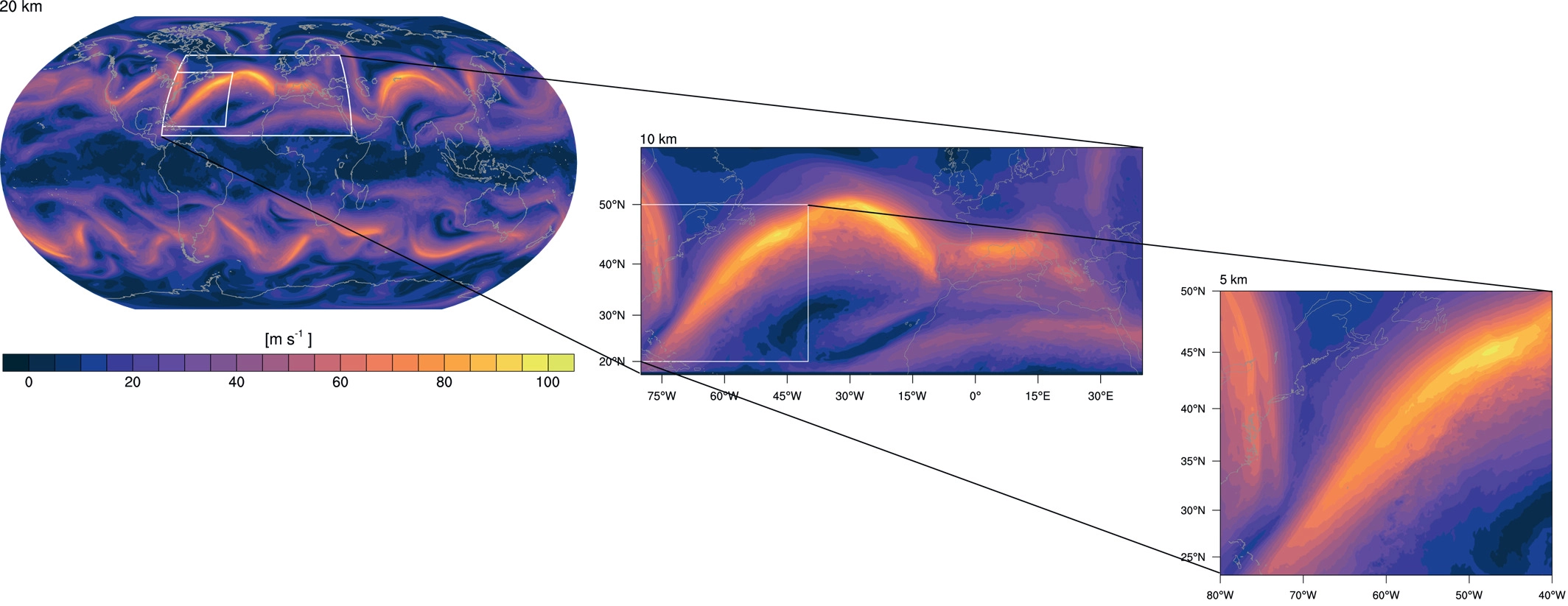Towards eliminating a decade-old climate model bias
Climate models have many persistent and systematic biases, but a new study shows that allowing for a physical rather than statistical representation of energy transport reduces one of them.
Climate models have many persistent and longstanding circulation biases that greatly reduce their utility for adaptation and risk mitigation studies. Among these are large and well documented biases in the representation of rain bearing systems across the globe. In the extra-tropics, these biases are manifested in the too equatorward, the too zonal orientation, and the too tepid intensification of storm tracks.
external pageSchemm (2023) uses a nesting technique to better resolve the storm track genesis region, which allows a more physical representation of the dynamics of storm-track growth, while still simulating enough storms to wrestle meaningful signals of their mean behavior from the noise of internal variability. Doing so in an idealized context, with nesting over one hemisphere but not in the other, allows the author to simultaneously compute a control, and shows that resolving the storms, even with a grid as coarse as 5 kilometers, substantially reduces these long-standing biases. This work adds to a growing body of literature that promises an improved representation of the climate system as climate models move toward kilometer-scale (storm-resolving) grids.
(Source: external pageEos)
Reference
- Schemm, S. (2023). Toward eliminating the decades-old “too zonal and too equatorward” storm-track bias in climate models. Journal of Advances in Modeling Earth Systems, 15, e2022MS003482. external pagehttps://doi.org/10.1029/2022MS003482

